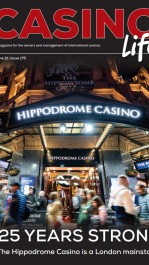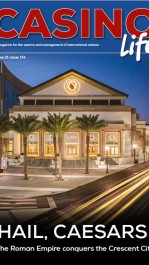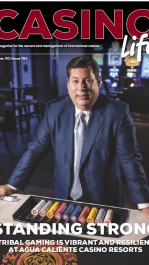SINGAPORE – Marina Bay Sands (MBS) has seen its annual earnings hit US$2 billion (S$2.7 billion) in what is its strongest performance since opening in 2010.
Record earnings before interest, taxes, depreciation and amortisation in 2024 were partly driven by a sharp rebound in high-end travel and a bold strategic shift to slash nearly a third of its hotel rooms in favour of high-end suites.
MBS achieved this amid a strong recovery in international arrivals. According to the Singapore Tourism Board, international visitor numbers rose by 21 per cent to 16.5 million in 2024, led by travellers from China, Indonesia and India.
In an interview with The Straits Times on April 3, MBS chief operating officer Paul Town attributed the milestone achievement to a post-pandemic strategy targeting luxury consumers who seek more experience-driven stays and are conscious of their environmental footprint.
The hotel reduced its room count from 2,561 to 1,850, reallocating space to high-end suites and tripling its butler service team from 60 to 160 to meet evolving luxury expectations.
By May 2025, there will be 776 suites, up from 205 suites before the Covid-19 pandemic.
Mr Town said MBS saw strong growth across both gaming and non-gaming sectors in 2024. Guest stays became longer, and a wider variety of offerings across dining, entertainment and leisure further boosted demand.
“I think we’ve elevated not just what we do in the real basics of hospitality, like the rooms, restaurants and gaming floors, but also experiences across the board, from the theatre to off-property activities like golf and yacht programmes,” he added.
Despite undergoing refurbishment with some rooms unavailable for booking, MBS maintained a high occupancy rate of 95 per cent in 2024, ahead of its 15th anniversary in 2025.
Mr Jesper Palmqvist, regional vice-president for the Asia-Pacific at hotel industry research firm STR, pointed out that growth of the Marina Bay area is largely driven by the luxury segment, with MBS benefiting from an upgrade that aligns it with higher-end market demands.
He added that hotels in the Marina Bay area remain the fastest-growing submarket in Singapore, with high-end hotel options continuing to thrive due to stronger cost management and rate growth.
The US$1.75 billion transformation of MBS first announced in 2022 is part of a multi-year programme to strengthen the positioning of the integrated resort as a leader in the luxury hospitality industry.
MBS currently commands an average daily room rate of $950 across the property, with prices for a basic-level suite starting from $1,300 a night, to $35,000 for the Presidential Suite.
For special events such as the Taylor Swift concerts here, packages including a three-night stay at the Paiza Signature Suite went up to $50,000.
The ultra-luxurious suites – which span over 6,000 sq ft – are located on the highest floors, from levels 50 to 54 in Towers 1 and 2, and are reserved for the hotel’s highest tier of guests. The experience includes private VIP arrival and dedicated lifts, butler services and exclusive access to the Paiza Sky Residence.
Mr Town said the reconfiguration of the resort was not just about physical upgrades but also about “fundamentally rethinking” what luxury guests want today.
Today’s luxury traveller is looking for deeper, more meaningful experiences, he added.
They value wellness and sustainability, and are less interested in one-off indulgences, focusing instead on holistic, personalised stays. Guests increasingly appreciate features such as smart in-room systems that reduce energy consumption, aligning luxury with environmental awareness.
The property is now attracting travellers across the region, with strong recovery in inbound travel from Indonesia, Malaysia, Thailand, Taiwan and India, said Mr Town.
While the Chinese market remains important, he noted that the South-east Asia market has become a key driver for MBS’ luxury segment.
Mr Palmqvist noted that ultra-luxury travel has historically shown resilience, even during broader economic slowdowns.
The ultra-luxury segment does possess this resilience globally and “Singapore is no exception, as it already attracts high-end travellers on a frequent basis”, said Mr Palmqvist.
Echoing that sentiment, Mr Town believes the current growth trajectory for MBS is not a short-term rebound but a sustainable one, driven by long-term shifts in consumer expectations.
Still, macroeconomic uncertainties loom.
OCBC Bank chief economist and head of treasury research and strategy Selena Ling warned that the high-spending tourism segment may face challenges if global trade tensions escalate following recent US tariffs.
“If businesses turn even more cautious and cut back on investments, hiring intentions and wage or bonus growth, this could translate to consumers also embarking on belt-tightening, that is, potentially a negative spiral,” said Ms Ling.
“That said, Singapore remains well-positioned in the medium to long term for sustained tourism growth with the new attractions, new capacity and connectivities.”
MBS parent company Las Vegas Sands has committed US$8 billion to a new development beside the current property. Ground-breaking is expected in mid-2025 and the development will have a distinct name, said Mr Town.
It will feature an all-suite hotel, a casino, a state-of-the-art entertainment arena, new Mice – meetings, incentives, conferences and exhibitions – facilities and additional luxury dining options.
On April 11, the Gambling Regulatory Authority said on its website that it has renewed MBS’ casino licence for another three years, with effect from April 26.
Mr Town said the new development will raise the bar further.
“It’s very much a standalone destination. It will have its own design style. In general, it will be more elevated than IR (Integrated Resort) One. It’s going to be all suites, and will feel like a more intimate, exclusive environment. Marina Bay Sands is obviously very premium, very luxury – but this will be a level higher,” he added.
Source: The Straits Times
Preview Image: Peter Wilkinson-White

















